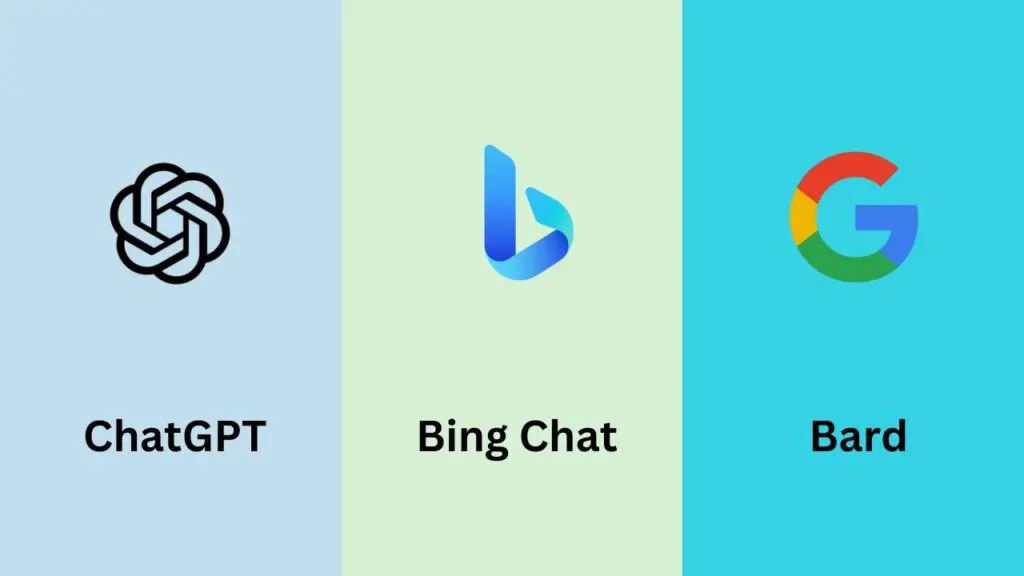
In today’s rapidly evolving digital landscape, artificial intelligence is transforming the way we interact with technology. AI language models have gained significant attention, as they power chatbots, virtual assistants, and other applications. Google Bard Vs ChatGPT Vs Bing are three prominent players in the field of AI language models. This article will explore their differences and strengths, allowing you to better understand the capabilities of each and make informed decisions when choosing an AI model for your needs.
Understanding AI Language Models
AI language models are designed to understand, generate, and manipulate human language. They process and generate text that can be used for various applications, such as chatbots, content generation, translation, and more. They are trained on vast datasets, enabling them to comprehend and generate human-like text.
Google Bard: The New Kid on the Block
Google Bard is a relatively new entrant in the world of AI language models. It’s developed by Google, one of the leading tech giants. Bard is designed to be more conversational, making it well-suited for chatbots and virtual assistants. It aims to provide a seamless, natural conversation with users, reducing the gap between human and machine-generated text.
Bard boasts impressive capabilities, and its training data is broad and diverse. Google is continually fine-tuning Bard to make it better at understanding context and providing accurate responses.
ChatGPT: The Trusted Giant
ChatGPT, powered by OpenAI, is one of the most renowned AI language models. It’s a sibling to GPT-3.5, which has been widely adopted by developers, businesses, and researchers. ChatGPT is known for its versatility and ability to generate human-like text in a wide range of topics and languages.
One of ChatGPT’s strengths is its ability to produce coherent and contextually relevant responses. It can handle a variety of tasks, from answering questions and generating creative content to programming and more. Its training data is extensive and includes a wide array of internet text, which makes it a versatile and robust choice for developers.
Bing: Microsoft’s Contribution
Bing is powered by Microsoft’s AI technology and is also making its mark in the world of AI language models. Although it may not be as famous as Google Bard or ChatGPT, it should not be underestimated. Bing is designed to be a powerful text generation tool, capable of assisting with content creation and more.
Bing’s strength lies in its ability to provide clear and concise responses. It can be an excellent choice for tasks that require straightforward answers or content generation. Microsoft is actively investing in improving Bing’s capabilities to make it a reliable AI model.
Google Bard vs. ChatGPT vs. Bing: The Showdown
Let’s take a closer look at how Google Bard vs ChatGPT, and Bing stack up against each other in different aspects:
-
Conversational Abilities:
- Google Bard: Bard excels in natural conversations and is designed to offer human-like responses.
- ChatGPT: ChatGPT also performs well in conversations, offering coherent and contextually relevant responses.
- Bing: While Bing is capable, it may not be as conversational as Bard and ChatGPT.
-
Versatility:
- Google Bard: Bard is geared toward chatbot applications, making it highly suitable for this purpose.
- ChatGPT: ChatGPT is versatile, with a wide range of applications, from content generation to coding assistance.
- Bing: Bing is robust but may be more suitable for straightforward, factual tasks.
-
Response Quality:
- Google Bard: Google Bard is making significant strides in response quality, aiming to provide more accurate and context-aware answers.
- ChatGPT: ChatGPT consistently delivers high-quality responses across various tasks.
- Bing: Bing provides reliable responses, especially for tasks requiring concise answers.
-
Training Data:
- Google Bard: Google leverages its vast resources to continuously improve Bard’s training data.
- ChatGPT: OpenAI’s ChatGPT benefits from extensive internet text, ensuring a broad understanding of language and topics.
- Bing: Microsoft continues to enhance Bing’s training data, contributing to its growth.
-
Ease of Integration:
- Google Bard: Integration with Google services and platforms is seamless, offering an advantage for developers working within the Google ecosystem.
- ChatGPT: ChatGPT offers well-documented APIs and is widely adopted by the developer community.
- Bing: Bing can be integrated into various applications, with Microsoft’s extensive developer tools.
-
Continual Improvements:
- Google Bard: Google is actively improving Bard’s capabilities to better understand context and provide more accurate responses.
- ChatGPT: OpenAI is dedicated to refining ChatGPT and regularly releases updates and improvements.
- Bing: Microsoft is committed to enhancing Bing’s abilities and expanding its use cases.
Conclusion: Making the Right Choice
Choosing the right AI language model depends on your specific needs. Google Bard, ChatGPT, and Bing all offer unique strengths. If you require a conversational AI model for chatbots, Google Bard may be the ideal choice. For versatility and a wide range of applications, ChatGPT is a trusted option. Bing, with its clarity and reliability, is excellent for tasks that require straightforward answers.
As the field of AI language models continues to evolve, staying updated on the latest developments and improvements from ChatGPT Vs Google Bard Vs Bing will be crucial to making an informed decision for your specific applications. Each of these models has its place in the AI landscape, and the right choice ultimately depends on your unique requirements.


